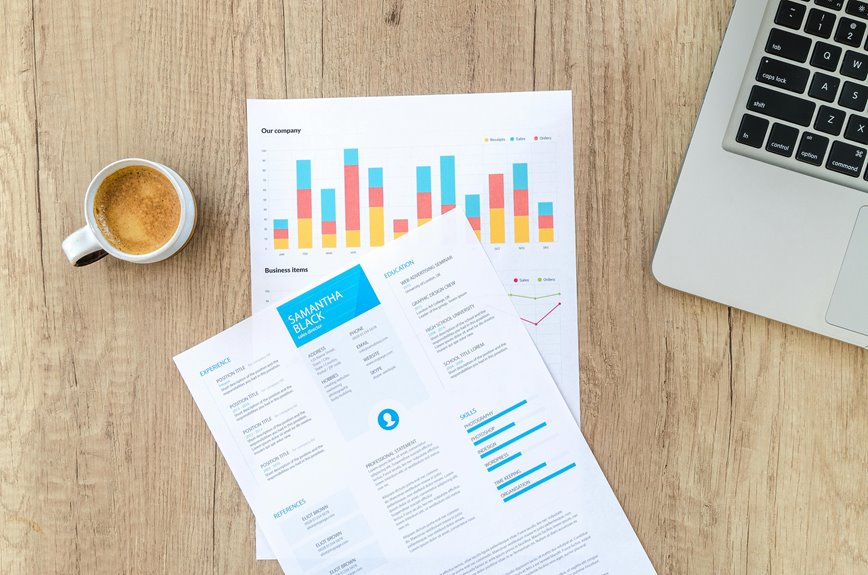Essentials of Business Analytics 3384569361

Business analytics serves as a cornerstone for modern organizations aiming to improve decision-making and efficiency. By harnessing data collection, statistical techniques, and visualization tools, companies can unlock valuable insights. As more businesses adopt data-driven strategies, understanding the key components of analytics becomes increasingly vital. This raises essential questions about the practical applications and the impact on competitive advantage in today’s dynamic market. What are the critical elements that ensure successful implementation?
Understanding Business Analytics
In today’s data-driven landscape, a significant understanding of business analytics has become essential for organizations seeking to enhance decision-making processes.
Business intelligence tools facilitate the effective collection and analysis of data, while predictive modeling allows businesses to anticipate future trends.
Together, these elements empower organizations to make informed choices, optimize resources, and ultimately foster a culture of agility and innovation in an increasingly competitive environment.
Key Components of Business Analytics
Business analytics comprises several key components that collectively drive effective data utilization within organizations.
Central to this framework are predictive modeling techniques, which forecast future trends based on historical data, and decision support systems that guide strategic choices.
Together, these elements empower businesses to make informed decisions, optimizing operations while fostering innovation and adaptability in an ever-evolving marketplace.
Data Collection and Preparation
Effective data collection and preparation are foundational to successful business analytics.
Identifying relevant data sources is crucial, as the quality and relevance of the data directly impact analytical outcomes.
Furthermore, employing robust data cleaning techniques ensures that inaccuracies and inconsistencies are addressed, enabling more reliable insights.
Data Sources Identification
Identifying data sources is a critical phase in the data collection and preparation process, serving as the foundation for robust business analytics. Effective data source types must be analyzed for their relevance to ensure informed decision-making. A thorough data relevance evaluation not only enhances data integrity but also maximizes analytical insights.
| Data Source Type | Relevance Evaluation |
|---|---|
| Internal Databases | High |
| Social Media | Medium |
| Surveys | High |
| Public Records | Medium |
| IoT Devices | High |
Data Cleaning Techniques
Data cleaning techniques play a pivotal role in ensuring the accuracy and reliability of datasets used in business analytics.
Employing robust data imputation methods helps address missing values, while effective outlier detection identifies anomalies that could skew analysis.
Together, these techniques enhance data quality, enabling analysts to derive meaningful insights and make informed decisions, ultimately fostering a data-driven culture within organizations.
Statistical Analysis Techniques
Statistical analysis techniques serve as fundamental tools in business analytics, encompassing both descriptive and inferential statistics.
Descriptive statistics provide a summary of data characteristics, while inferential statistics facilitate conclusions about larger populations based on sample data.
Understanding these methodologies is crucial for effective decision-making and predictive modeling in a business context.
Descriptive Statistics Overview
Descriptive statistics serve as a foundational element in the realm of data analysis, providing crucial insights into the characteristics of a dataset.
By employing central tendency measures such as mean, median, and mode, analysts can summarize data effectively.
Additionally, data distribution analysis reveals patterns and variability, aiding in understanding the overall structure, thus empowering informed decision-making in business contexts.
Inferential Statistics Methods
While descriptive statistics provide a snapshot of data, inferential statistics methods extend beyond mere observation, allowing analysts to make predictions and generalizations about a population based on a sample. Key techniques include confidence intervals and hypothesis testing, which facilitate informed decision-making. The following table summarizes these methods:
| Method | Description | Application |
|---|---|---|
| Confidence Intervals | Estimate the range of population parameters | Estimating means |
| Hypothesis Testing | Determine the validity of assumptions | Testing theories |
| Regression Analysis | Assess relationships between variables | Predictive modeling |
| ANOVA | Compare means across groups | Experimental design |
Data Visualization and Interpretation
Effective data visualization serves as a crucial bridge between complex datasets and actionable insights, enabling stakeholders to grasp intricate patterns and trends at a glance.
Real-World Applications of Business Analytics
Business analytics has found extensive application across various industries, with over 70% of organizations leveraging data-driven strategies to enhance operational efficiency and competitive advantage.
Key applications include customer segmentation for targeted outreach, predictive modeling for sales forecasting, performance metrics to assess outcomes, market trend analysis for strategic planning, supply chain optimization, and personalized marketing, all contributing to effective risk assessment and informed decision-making.
Conclusion
In an era where over 70% of organizations embrace data-driven strategies, the intersection of business analytics and decision-making becomes increasingly significant. Coincidentally, as companies harness advanced statistical techniques and robust data preparation, they not only enhance their operational efficiency but also cultivate a culture of innovation. This dual focus on analytics and adaptability empowers businesses to navigate the complexities of a rapidly evolving marketplace, ultimately positioning them for sustained competitive advantage.



